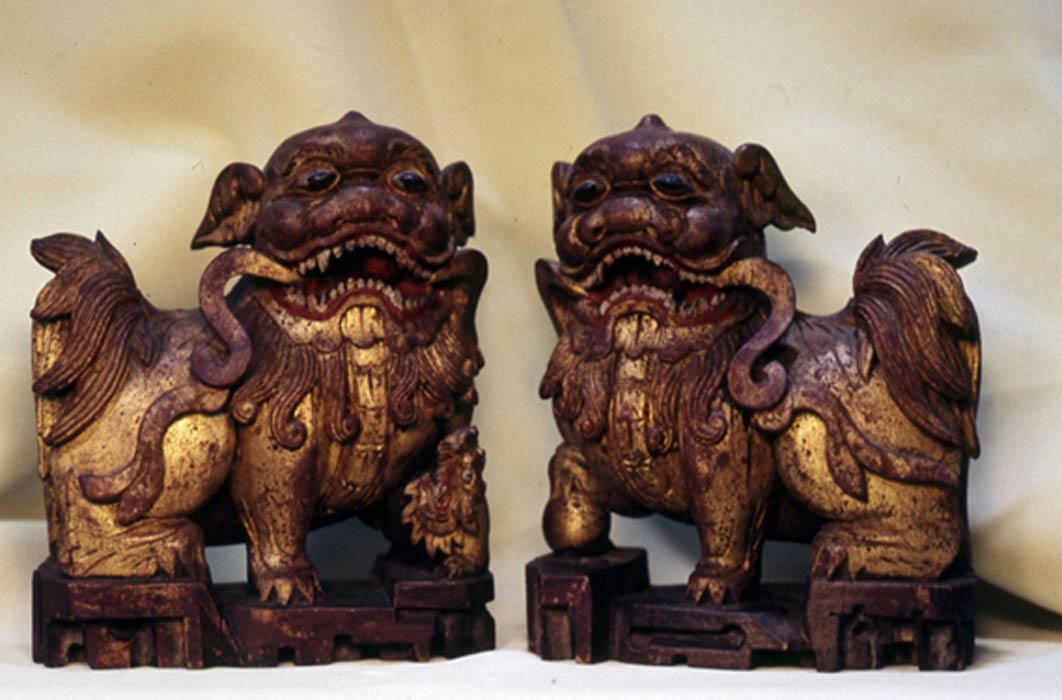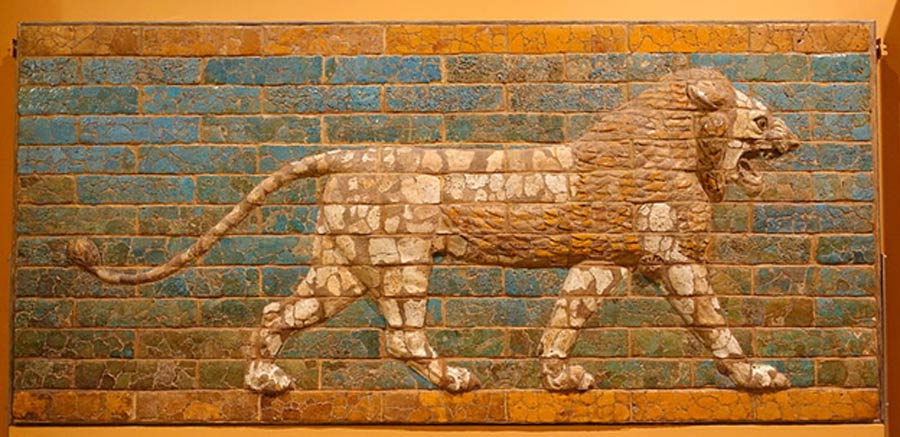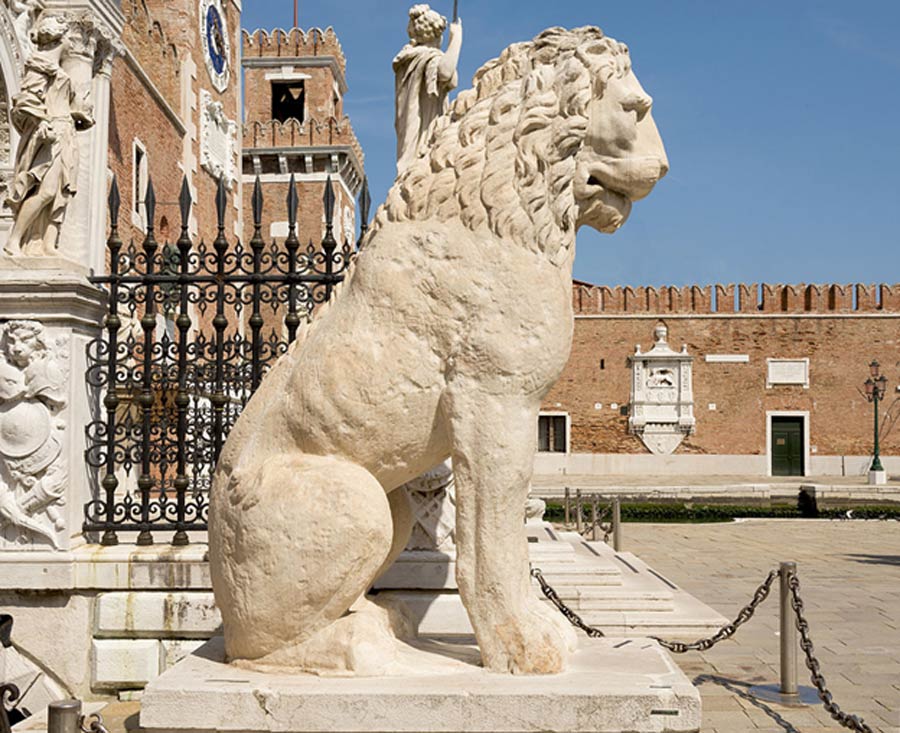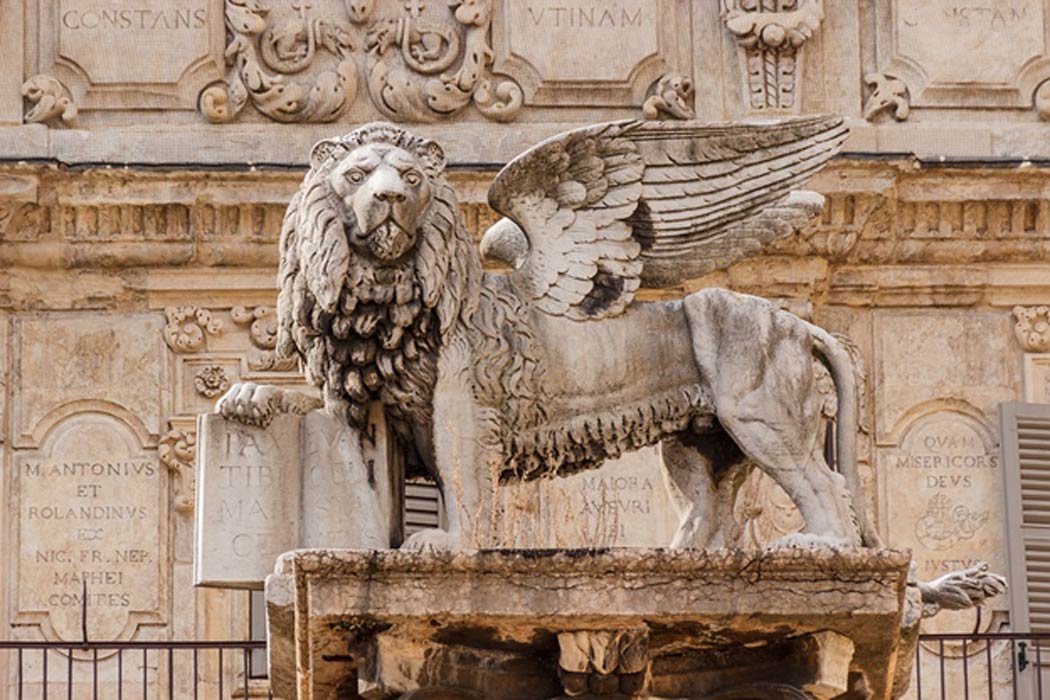
Chinese Lion Kings: Winged Lions, Foo Dogs and Gaimei
The King of the Beasts triumphs in Chinese mythology, albeit in many shapes and forms. Chinese artists combined different creatures’ attributes to create a composite beast, which they called pixiu (pi-hsieh). The term is commonly used to refer to any animal amalgam (and there are many in Chinese mythology), but used properly, pixiu is the name of a specific fanciful creature which resembles a lion with wings. Such chimerical creatures are described in Chinese literature and appear in paintings and sculptures, but their discernment is problematic, because there are so many minute differences between animal types and subtypes.

Striding Lion from Processional Way in Babylon, Neo-Babylonian Period, c. 604-562 BC, molded and glazed brick - Oriental Institute Museum, University of Chicago (Public Domain)
Lions: Symbols of Royalty
Lions were and are still honored, as evidenced from even modern movies like Disney’s Lion King and C. S. Lewis’ Narnia series, besides their appearance in plays, books, articles, and other media. The lion (felix leo) appears in artwork all over the world due to its majestic structure and strength, courage and nobility. Symbolic of royalty, their depictions, whether they are lying, sitting, walking, running, or fighting, appear in heraldic imagery, and the term ‘lion’ is associated with rulers like Richard the Lionheart and Leonides of Sparta. Lions decorate Assyrian kings’ palaces, and the lioness represented Mycenaean kings’ power. The Lion Gate of Mycenae in Greece, which was constructed in the 13th century BC, has two female lions flanking a column, and this symbolism was common in other structures from the same period. The Greeks and Romans considered the lion a protector, and it therefore appears beside royal monuments, gates, fountains, and near the (culturally) important graves of famous warriors. Typically, the lions seen protecting tombs are sleeping, as a sleeping lion symbolizes a fallen hero.

Ancient Greek Lion at the Arsenale in Venice. (Didier Descouens / CC BY-SA 4.0)
Lions Guarding Tombs and Temples
Lions guard Leonidas’ tomb near Sparta and Mausolus’ tomb in Halicarnassus, and the Piraeus lion, originally located in the famous Athenian Harbor, was so important to the Italians who looted it in the 17th century that they dubbed its location Lion Port (Porto Leone). In Christian and Western art, the lion symbolizes St. Mark the evangelist and resurrection due to the old belief that lions slept with their eyes open. It was the insignia of Judah’s tribe and the lion is mentioned in the Book of Revelation and the Kebra Nagast. It is on Jerusalem’s coat of arms and has important symbolism in the Christian-based Rastafari faith. Emperor Haile Selassie I of Ethiopia was crowned with the title: “King of kings, Lord of lords, Conquering Lion of Judah, Elect of God, the Light of the World,” and it was important to the Egyptian religion.
- Chinese Fantastic Beasts: The Taotie Demon Who Eats Humans
- Chinese Unicorns: Harbingers of Good Omens
- The Last Lions of Asia Almost Lost to Mankind
The sphinx, which sports a lioness’ body and a human head, was thought to protect pharaohs, and sometimes rulers were depicted in artwork as sphinxes themselves. The god Sekhmet was depicted with a human body and a lion’s head, and during the New Kingdom Period, the Nubian gods Dedun and Maahes were portrayed as lions. A temple to the latter was erected in Leontopolis, which literally translates to City of Lions. The lion plays a huge role in the culture, architecture, and artwork of civilizations all over the planet.

Winged lion statue in Italy (Public Domain)





